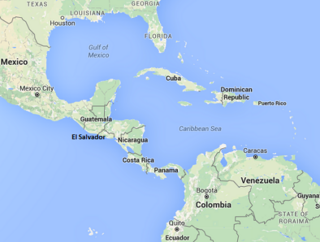Overland from Cuba to Texas
John Perry
Thawing relations between the United States and Cuba have brought an upsurge in Cubans trying to leave the island. They’re worried they may lose their favourable US immigration status, becoming nomore welcome than any other Latino who fancies life in the US.
Since 1995, the ‘wet foot, dry foot’ policy has deterred people from trying to leave by boat, as anyone caught at sea is sent back. Cubans can't take a flight to Miami as no airline will carry themwithout a US visa, virtually unobtainable in Havana. But if they find another way to put foot on US soil they are allowed to stay. Cuban doctors are especially privileged: they can present themselves at a US embassy anywhere in the world and get a visa, thus undermining Cuba's many aid programmes.
Cubans can now leave the island without restriction, subject to the visa rules of the country they go to. Last year thousands took advantage of visa-free travel to Ecuador, hardly a direct route toMiami but less perilous than sailing a raft across the Florida Straits. It’s a stepping stone to the US via Colombia and Central America: a hard overland journey, on foot or by local buses. People smugglers have been quick to set up routes through or around the Darien Gap between Colombia and Panama, where there are no roads, thick jungle, and a risk of robbery or worse.
There are around 2000 Cubans in Panama and 8000 on the next step north in Costa Rica. After travelling 2500 km, many of them are sleeping rough or in temporary shelters at the frontier withNicaragua, still 4000 km from the Texas border. Until two weeks ago they were all stuck. Both Nicaragua and Guatemala refused them passage. A group of 1600 who attempted the crossing in November were repelled by police with tear gas. Nicaragua is a Cuban ally, but there are other reasons why Central Americans may feel little obligation to help émigré Cubans.
First, few Cubans are escaping from a 'well-founded fear of being persecuted', so they aren't refugees according to UN conventions, entitled to assistance and in Nicaragua's case to benefit fromits generous refugee law.
Second, even the poorest people in Cuba have access to free education and healthcare. Crime rates are also lower than in other Latin American countries. In Honduras, for example, one in five people live in extreme poverty and San Pedro Sula has for four years been the world’s most violent city. Countries struggling with poverty and crime may not feel inclined to help people less exposed to either.
Third, few Central Americans, despite facing worse threats than most Cubans (murderous gangs in El Salvador; political assassination in Honduras), can take advantage of asylum in the US. Newagreements between the US and Mexico mean that many migrants are bussed back south before they get even halfway to the Rio Grande. Cubans can enter the US openly; Central Americans face borderpatrols and a perilous desert crossing. In 2015, twice as many Guatemalans were deported from the US as Cubans were accepted, often with similar asylum claims or family connections.
Perhaps with an eye on the coming election, the Obama administration at first said that the countries which denied passage to the Cubans were right to do so. But he hasn’t changed the wet foot, dry foot policy. Late last month, Costa Rica, El Salvador, Guatemala, Mexico and the UN International Organisation for Migration agreed to organise an airlift to take the migrants to El Salvador, from where they could travel on by bus. The first plane left a couple of weeks ago. The 180 Cubans on board paid $550 and received special treatment at the Guatemalan and Mexican borders. Those who could afford to fly the last leg crossed into Texas on 15 January.
But the airlift may not solve the problem. Some of the migrants in Costa Rica don't have the money for the plane, and those in Panama are still stuck. Meanwhile, Ecuador has imposed a visa requirement on Cubans. The only country in northern South America that still allows entry without visas is Guyana. By road, it’s 2200 kilometres further from Texas.
